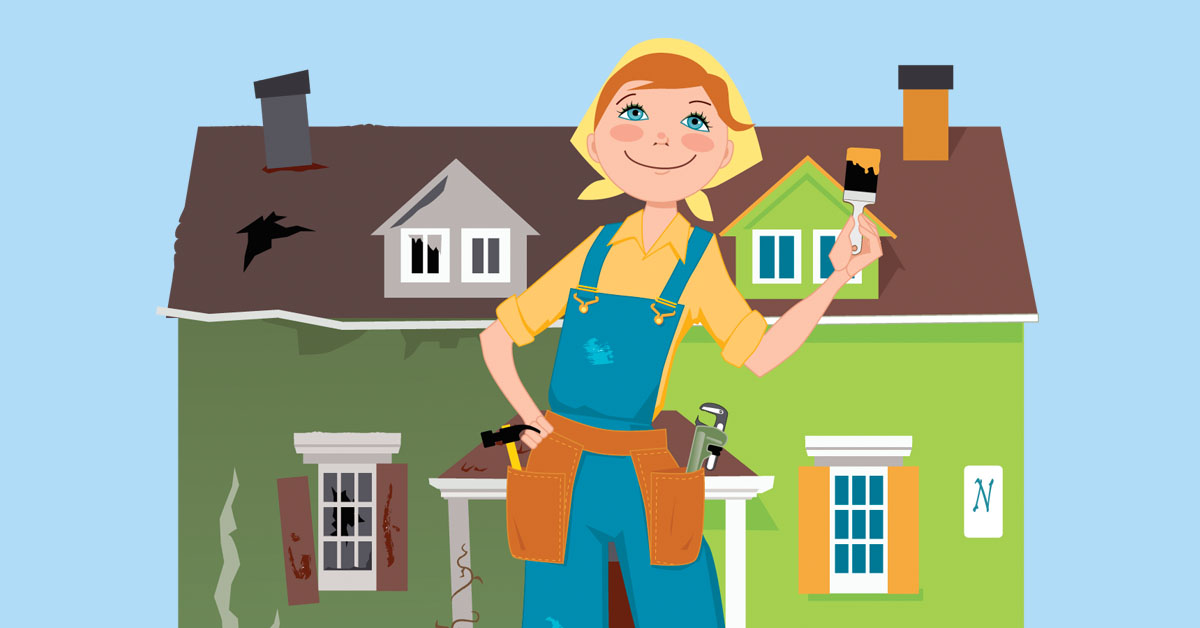Flipping homes in today’s market is difficult, and many investors have turned away. But other investors are dedicated and bullish, and they continue to snatch up vacant and dilapidated homes. When they’re through, they add newly renovated, turnkey inventory back into the market while taking home a tidy profit.
Properties flipped by their investors and placed back on the market are 30% to 40% less expensive than new construction. according to data from New Western, a national real estate investment company. “Investors want to make money, but their interests are aligned with their community,” says New Western president Kurt Carlton. “Most of these flips are vacant homes, unused inventory that’s turning into a plus-one net housing unit. Anything returning supply is helping affordability.”
Vacant homes and fixer-uppers that need a lot of work aren’t desirable to the average buyer. And with higher interest rates and inflation, many buyers don’t have the extra time or cash to renovate a home on their own. Enter a tenacious sect of investors — those with the capital, skills and connections to get a home spruced up and resold.
“Most of these flips are vacant homes, unused inventory that’s turning into a plus-one net housing unit. Anything returning supply is helping affordability.”
– Kurt Carlton, president, New Western
Luke Wishmyer is one such investor. He flips homes along the East Coast, from West Virginia to Florida. He says he has flipped homes that were in terrible condition, including a recent one in Florida that had been completely flooded. His average profit depends on the market and property type, and he says there are fewer deals available in the current market. But he’s picky and waits for the best opportunities to pop up rather than jumping on any deal.
“My wholesalers know what I want and they send me those deals,” Wishmyer says. He acknowledges that while some homebuyers might want the properties he picks up, they often can’t get the types of financing that Wishmyer has available to him. He’s funded many deals over the years through private lenders. One of his lending partners, Christian Groomes of Lima One Capital, says that Wishmyer is wise in picking deals that maximize his return on investment (ROI).
“On our end, we are seeing less transactions, but we’re also seeing this flipside where people are doing a deal just to do a deal,” Groomes says. “If you’re doing it just to do it, you could see yourself fail.”
Nationally, the share of all home sales that are flips is rising. According to data from Attom, 9% of all U.S. home sales in first-quarter 2023 were flips, up from 8% in Q4 2022 and well above the 5.9% rate for all of 2021. While the percentage is rising, however, the raw number of flipped homes has declined from about 115,000 in Q1 2022 to 73,000 in Q1 2023.
The gross flipping profit rose slightly in first-quarter 2023 too. Attom reported a typical profit of $56,000 per home, or 22.5% ROI, up from 21.7% in Q4 2022. Profits have fallen significantly over the past two years as home prices skyrocketed, and Attom CEO Rob Barber says that ROI in the 20% range can “easily be wiped out by carrying costs that include renovation expenses, mortgage payments and property taxes.” But the profit increase earlier this year is the first sign of a market rebound.
Barber says that investors realize the best returns in the lowest-priced markets, where typical purchase prices remain below $150,000. “While raw-dollar profits were smallest in those markets — mostly below $80,000 — profit margins were highest,” he says. “They exceeded 30% in almost all markets in that low-end price range and topped 50% in about half.”
Carlton believes that fix-and-flip opportunities will soon explode as the nation enters a period that he coins as the “Great Renovation.” Homes between 20 to 40 years old are hitting a stage where they need major repairs for the first time, and millions of homes built in the 1980s, ‘90s and early 2000s are reaching this milestone. Carlton says that 24 million homes will be ripe for major renovation by 2027. “This is a problem the investors solve,” he says, “and more people will get into house flipping because there will be more demand.”
Rising foreclosure rates also could provide opportunities for investment, since this raises the supply of homes for sale that are often in less-than-ideal shape. But foreclosures are growing much less rapidly in recent months, according to Barber, who cited Attom’s first-half 2023 foreclosure report showing that foreclosure activity was up only 13% year over year. “The opportunities are dwindling, but they are still up from two years ago, when a COVID-related moratorium on foreclosures was first lifted,” Barber says.
Groomes says that foreclosure deals are approved on a case-by-case basis for both investors and lenders, depending on the situation and pricing. “On certain scenarios, it could provide deals to investors, but you have to be really picky,” he says. “To find more opportunities right now is all about relationships.”
The data is complex, but Carlton says that investor sentiment is still positive, with 80% of New Western investors selling homes at or above asking price after a flip. “We peel the onion back quite a bit and … our survey showed us they’re actually bullish,” Carlton says. “The market is now getting into an upswing and the markets that had the biggest (price) corrections are coming back.” ●
Author
-

Hannah Darden is the former industry rankings editor at Scotsman Guide Inc.
View all posts






